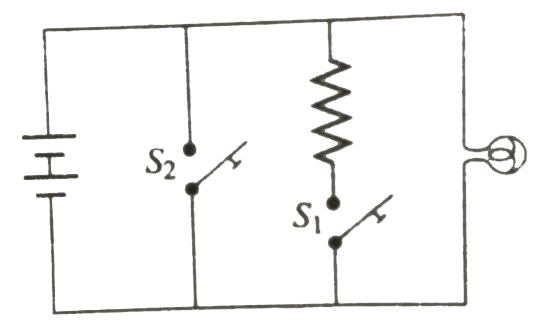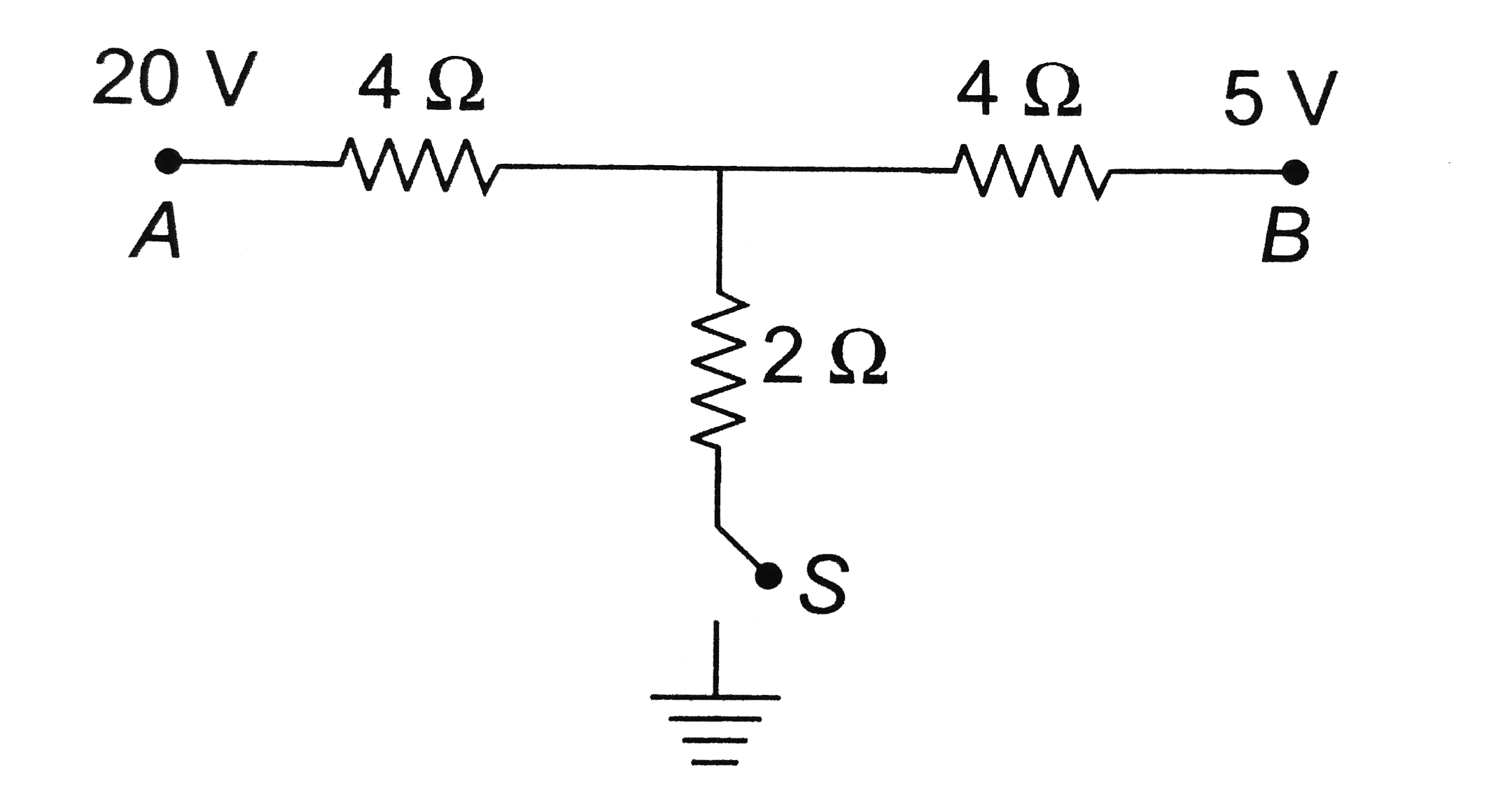An electrical system has open-closed switches S1,S2andS3 as shown in fig. The switches operate independently of one another and the current will flow from A→B either if S1 is closed or if both S2andS3 are closed. If P(S1)=P(S2)=P(S3)=1/2, then find the probability that the circuit will work. fig
To solve the problem, we need to find the probability that the circuit will work, given the conditions of the switches. Let's break it down step by step.
Step 1: Understand the Circuit Conditions
The circuit will work if:
- Switch S1 is closed, or
- Both switches S2 and S3 are closed.
Step 2: Define Events
Let:
- E be the event that the circuit works.
- A be the event that switch S1 is closed.
- B be the event that both switches S2 and S3 are closed.
Step 3: Calculate the Probabilities
Given:
- P(S1)=P(S2)=P(S3)=12
We need to find P(E), which can be expressed as:
P(E)=P(A∪B)
Using the formula for the probability of the union of two events:
P(A∪B)=P(A)+P(B)−P(A∩B)
Step 4: Calculate P(A)
Since P(S1)=12:
P(A)=12
Step 5: Calculate P(B)
The event B occurs when both S2 and S3 are closed. Since the switches operate independently:
P(B)=P(S2)⋅P(S3)=12⋅12=14
Step 6: Calculate P(A∩B)
Since A and B are independent events:
P(A∩B)=P(A)⋅P(B)=12⋅14=18
Step 7: Substitute Values into the Union Formula
Now substitute P(A), P(B), and P(A∩B) into the union formula:
P(E)=P(A)+P(B)−P(A∩B)
P(E)=12+14−18
Step 8: Find a Common Denominator
To perform the addition and subtraction, we need a common denominator, which is 8:
P(E)=48+28−18
P(E)=4+2−18=58
Final Answer
The probability that the circuit will work is:
58
The circuit will work if:
- Switch S1 is closed, or
- Both switches S2 and S3 are closed.
Let:
- E be the event that the circuit works.
- A be the event that switch S1 is closed.
- B be the event that both switches S2 and S3 are closed.
Given:
- P(S1)=P(S2)=P(S3)=12
P(E)=P(A∪B)
P(A∪B)=P(A)+P(B)−P(A∩B)
Since P(S1)=12:
P(A)=12
The event B occurs when both S2 and S3 are closed. Since the switches operate independently:
P(B)=P(S2)⋅P(S3)=12⋅12=14
Since A and B are independent events:
P(A∩B)=P(A)⋅P(B)=12⋅14=18
Now substitute P(A), P(B), and P(A∩B) into the union formula:
P(E)=P(A)+P(B)−P(A∩B)
P(E)=12+14−18
To perform the addition and subtraction, we need a common denominator, which is 8:
P(E)=48+28−18
P(E)=4+2−18=58
The probability that the circuit will work is:
58
Topper's Solved these Questions
Similar Questions
An electrical system has open-closed switches S1,S2 and S3 as shown in fig. The switches operate independently of one another and the current will flow from A→B either if S1 is closed or if both S2 and S3 are closed. If P(S1)=P(S2)=P(S3)=1/2, then find the probability that the circuit will work.
View SolutionIn fig. A2.27, the charge that flows from P to Q when the switch S is closed is

View SolutionWhich of two switches S1andS2 shown in Fig. 7.31 will produce short - circuiting?

View SolutionConsider the situation shown in figure. The switch S is open for a long time and then closed.

Find the charge flown through the battery when the switch S is closed.
View SolutionWhen the switch S, in the circuit shown, is closed, then the value of current I will be :

View SolutionIf two switches S1andS2 have respectively 90% and 80% chances of working. Find the probabilities that each of eth following circuits will work.
View SolutionConsider the situation shown in figure (31-E23 ) . The switch S is open for a long time and then closed . (a) Find the charge flown through the battery when the switch S is closed (b)Find the work done by the battery .

View SolutionAs the switch S is closed in the circuit shown in figure, current passed through it is.

View SolutionWhat is the probability that series circuit with three switches S1, S2and S3 with probabilities 13,12and34 respectively of functioning will work?
View SolutionIn the circuit shown in figure, reading of voltmeter is V1 when only S1 is closed, reading of voltmeter is V2 when only S2 is closed, and reading of voltmeter is V3 when both S1andS2 are closed. Then .

View Solution
